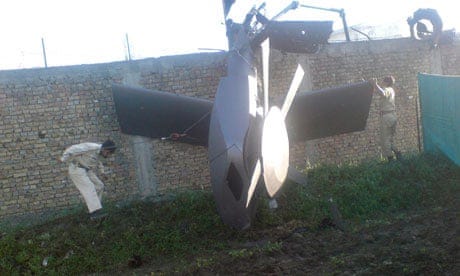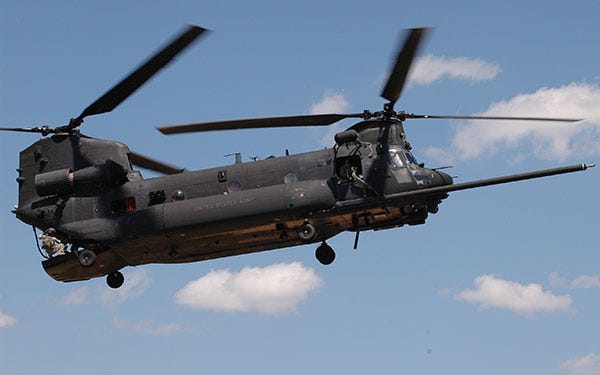Experts share most accurate Bin Laden Raid Stealth Helicopter Insight and Artwork so far
Former Head of Future Projects at Westland Helicopters takes on the Stealthhawk
Even elite SEAL Team Six members were unaware of the existence of the stealth helicopter days before the famous raid in 2011 that killed Osama Bin Laden. Just before the mission, they were shown the top-secret stealth helicopters and responded, “We have a ‘Transformers’ chopper, we’re going to be alright.”
The helicopters evaded Pakistan’s air defence network thanks to stealth technology and daring ultra-low-level flying. Fourteen years after Bin Laden’s death, the stealth helicopter remains secret, and little other than a tail section left at Bin Laden’s house in Pakistan is in the public domain. But further investigation is possible of this tantalising subject. We analyse and assess previous guesses of its appearance, examine the factors that shaped the helicopter’s design, and consider likely upgrades. We provide what we believe is the most realistic artwork to date. In unravelling this mystery, I enlisted the help of Dr Ron Smith, the former Head of Future Projects at Westland Helicopters, who himself created an early stealth helicopter design, and Dr Michael Carley, Senior Lecturer in the Department of Mechanical Engineering at Bath University, specialising in aeroacoustics, and aviation master artist Andy Godfrey from the Teasel Studio.
Reducing the detectable signature of a helicopter
Operationally useful reductions in the observable signature of a helicopter can only really be achieved if low observability is considered as the most dominant design feature from the outset. Clearly, there will be limitations when modifying a pre-existing type and some of these compromises are discussed below.
Type of Aircraft: In terms of the type to be used, this is likely to be a Special Operations mission. This is because Special Forces (SF) missions are very likely to be conducted in contested territory, and SF training and operational procedures will already be in place for such missions. A sufficient force must be deployed to break into a potentially heavily defended compound. In terms of SF equipment to carry that force, the US Army choice would be between the Black Hawk and Chinook.
One can immediately rule out the Chinook, whose physical size and distinctive acoustic signature would both be problematic.
The starting point is therefore a Special Operations Black Hawk – assumed to be an MH-60M of the 160th Special Operations Aviation Regiment – the ‘Night Stalkers’.
Detection
Helicopter detection will rely on human senses (visual and acoustic), augmented by radar, infra-red and (potentially) night vision sensors.
Taking each detection method in turn, what can we predict about the equipment and operational techniques that could be used for a Special Forces raid into a non-cooperative nation-state?
Visual Detection:
The first requirement is to be quiet. This may seem counterintuitive in the context of visual detection, but anyone who lives in proximity to helicopter operations knows that their unique acoustic signatures often give the first clue that there is a helicopter in the vicinity. The recognisable audible cue is likely to be the first trigger alerting ground forces. Reducing that signature will be discussed in more detail below.
Coming to the purely visual aspects - be hard to see. This would favour being small, but, on the other hand, the chosen aircraft must have sufficient cabin volume to carry the required manpower and equipment to complete the mission. The aircraft must also have sufficient range (fuel capacity) to carry out the mission.
Given the capability available to the US Army, the next obvious operational consideration would be to fly at night, preferably in minimal moonlight conditions. Night vision equipment would be used by the flight crew, but the use of radar for terrain following and obstacle detection / avoidance may not be desirable. The aircraft would, in all likelihood, be painted matte black and would not use navigation lights.
Operational Aspects
The key operational procedure to avoid detection will be to fly as low as possible using valleys and folds in the landscape to remain out of sight (and similarly not visible to ground-based radar or low-light sensors). This implies prior reconnaissance of specific ingress and egress routes – probably based on the best available terrain mapping. Military districts and centres of population must be avoided to the greatest extent possible. In addition, flight techniques will be adopted to minimise the risk of blade slap and other distinctive audio cues.
Acoustic Detection
The most distinctive means of human detection of a helicopter is its acoustic signature. There are several components ranging from pure tones (e.g. the sound of a Gazelle Fenestron or a Wasp tail rotor) to distinctive burbling sounds (e.g. the noise of a Lynx tail rotor interacting with the main rotor wake, for example).
Blade slap, caused by a main rotor blade encountering the tip vortices shed by a preceding blade or blades, produces the ‘wokka, wokka’ beat associated with types such as the Chinook or Bell 212 or 214ST. This is often heard during manoeuvring flight, or when descending or flaring to slow down. It is assumed that routine training will have identified techniques to minimise the risk of blade slap to the greatest extent possible.
There are other more broadband acoustic signatures arising due to gearbox meshing, turbine engine sounds and the general rotor wake.
The primary design approaches to minimise rotor noise would be to reduce main and tail rotor tip speeds and blade loadings. Because of the risk of high blade stresses, gearbox limitations and loss of control power in manoeuvres, the extent to which tip speed can be safely reduced may be somewhat limited. The RAH-66 Comanche had a low-speed quiet mode, which involved a 10% reduction in rotor tip speed, accompanied by corresponding reductions in speed and manoeuvring envelope.
Of course, with the significant redesign, one could consider increasing the number of main rotor blades, combined with a reduced tip speed; however, this would necessitate the design and qualification of a new rotor hub, as well as the development of a revised flight control system and the application of revised transmission and flight control fatigue lives. Unless an ongoing programme of this type is already underway, it is unlikely to be implemented at short notice for a single special operation, regardless of its high profile.
This does not mean, however, that the rather simpler tail rotor could not be redesigned. Given a clean sheet of paper, a Fenestron with unevenly spaced blades would probably offer the quietest solution. In this case, the anti-torque device would also be shielded from radar sensors from a front and rear aspect.
Alternatively, a new tail rotor with lower tip speed and an increased number of blades could be adopted. Whilst remaining balanced, an uneven blade spacing would broaden out the acoustic signature and potentially make it harder to track.
Radar Detection
Since the public showing of the Lockheed F-117 in April 1990, nearly every military platform has been designed with consideration of its radar signature. There is a degree of trade-off between being difficult to detect and track by surveillance radars and being difficult to engage by higher-frequency fire control radars.
For air systems, the general approach has been to reduce the radar cross-section primarily in the frontal aspect and primarily against enemy fire control radar. In most cases, only monostatic threats (i.e. those having co-located radar transmitter and receiver) are considered. Without going into the detailed physics, it is possible to list several guidelines that should be applied, to the maximum extent practicable.
These measures are likely to come with penalties in terms of performance (due to increased weight and drag), and maintenance. Taken to their logical extreme, there will also be compromises in terms of trading off other desirable features that affect survivability, sensor performance, aircraft handling and control, weapon load, radius of action, etc.
The following list addresses topics to be considered; not all of these are likely to be fully implemented, dependent on the threat profile and the degree of risk that the operator / command structure are prepared to accept.
· Flat, faceted structural panels designed to deflect incoming radar energy away from the source transmitter.
· Edges should similarly be orientated to reflect energy away from threat.
· Surface coatings and treatments that are ‘lossy’ and reduce the surface currents induced by the radar energy – iron-loaded paints being an example.
· Elimination or shielding of external excrescences – particularly dihedrals and trihedrals, that reflect energy back towards its source.
On helicopters, main and tail rotor hub and control components, external weapons and fuel tanks, flotation gear, wire cutters, aerial mounts and many other items will require attention, shielding or complete removal. Interestingly, the F-117 used retractable comms aerials and faceted air data probes, showing the level of attention to detail likely to be required.
o Where necessary, any RAM fairings are likely to feature radar-transparent outer surfaces over a lossy carbon-loaded honeycomb substrate tuned to reduce the reflected energy at a specific radar frequency.
o All externally mounted systems should be reviewed. Difficult decisions may be required in relation to the retention, or otherwise, of defensive aid equipment such as missile launch detection / approach warning, IR jammer, chaff and flare systems, etc.
o A retractable undercarriage could be considered (as on RAH-66 Comanche). However, the undercarriage is a key component to delivering crashworthiness protection for the occupants. It may be that terrain screening and nap-ot-the-earth operation address some of this concern and that a fixed undercarriage would be retained. Shaped fairings and RAM treatments would probably be introduced, however.
The Paid Subscriber Section Below Features Full Colour Artworks of the Stealth Blackhawk
Keep reading with a 7-day free trial
Subscribe to Hush-Kit Aviation Newsletter to keep reading this post and get 7 days of free access to the full post archives.








